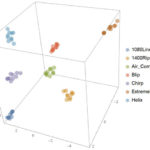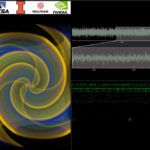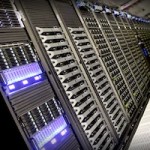JULY 6, 2021 — When gravitational waves were first detected in 2015 by the advanced Laser Interferometer Gravitational-Wave Observatory (LIGO), they sent a ripple through the scientific community, as they confirmed another of Einstein’s theories and marked the birth of gravitational wave astronomy. Five years later, numerous gravitational wave sources have been detected, including the first […]
The Search for Gravitational Waves
In this video from PASC18, Alexander Nitz from the Max Planck Institute for Gravitational Physics in Germany presents: The Search for Gravitational Waves. “The LIGO and Virgo detectors have completed a prolific observation run. We are now observing gravitational waves from both the mergers of binary black holes and neutron stars. We’ll discuss how these discoveries were made and look into what the near future of searching for gravitational waves from compact binary mergers will look like.”
Using Ai to detect Gravitational Waves with the Blue Waters Supercomputer
NASA researchers are using AI technologies to detect gravitational waves. The work is described in a new article in Physics Review D this month. “This article shows that we can automatically detect and group together noise anomalies in data from the LIGO detectors by using artificial intelligence algorithms based on neural networks that were already pre-trained to classify images of real-world objects,” said research scientist, Eliu Huerta.
Video: Deep Learning for Real-Time Gravitational Wave Discovery
Scientists at NCSA have pioneered the use of GPU-accelerated deep learning for rapid detection and characterization of gravitational waves. This new approach will enable astronomers to study gravitational waves using minimal computational resources, reducing time to discovery and increasing the scientific reach of gravitational wave astrophysics.
Gravitational Waves: The Role of Computing in Opening a New Field of Astronomy
Dr. Joshua L. Willis from the California Institute of Technology and Dan Stanzione from TACC gave this talk at the Intel HPC Developer Conference. “These discoveries mark the beginning of gravitational wave astronomy, and in this talk we will highlight what we have learned and hope to learn in this new field, pointing out many of the ways in which high-throughput and high-performance computing have been essential to its progress.”
SC17 Highlights Nobel Prize Winning LIGO Collaboration
In this video from SC17, researchers discuss the role of HPC in the Nobel Prize-winning discovery of gravitational waves, originally theorized 100 years ago by Albert Einstein in his general theory of relativity. “We are only now beginning to hear the vibrations of space-time that are all around us—we just needed a better ear. And when we detect that, we’re detecting the vibrations of everything that has ever moved in the universe. This is real. This is really there, and we’ve never noticed it until now.”
Comet Supercomputer at SDSC Helps Confirm Gravitational Wave Discovery
The NSF-funded Comet supercomputer at SDSC was one of several high-performance computers used by researchers to help confirm that the discovery of gravitational waves before a formal announcement was made.









